 W
WThe Continental Congress was a series of legislative bodies which met in the British American colonies and the newly-declared United States just before, during, and after the American Revolution. The term "Continental Congress" most specifically refers to the First and Second Congresses of 1774–1781 and may also refer to the Congress of the Confederation of 1781–1789, which operated as the first national government of the United States until being replaced by the current congress. Thus, the term covers the three congressional bodies of the Thirteen Colonies and the new United States that met between 1774 and 1789.
 W
WThe First Continental Congress was a meeting of delegates from 12 of the 13 British colonies that became the United States. It met from September 5 to October 26, 1774, at Carpenters' Hall in Philadelphia, Pennsylvania, after the British Navy instituted a blockade of Boston Harbor and Parliament passed the punitive Intolerable Acts in response to the December 1773 Boston Tea Party. During the opening weeks of the Congress, the delegates conducted a spirited discussion about how the colonies could collectively respond to the British government's coercive actions, and they worked to make common cause. A plan was proposed to create a Union of Great Britain and the Colonies, but the delegates rejected it. They ultimately agreed to impose an economic boycott on British trade, and they drew up a Petition to the King pleading for redress of their grievances and repeal of the Intolerable Acts. That appeal had no effect, so the colonies convened the Second Continental Congress the following May, shortly after the battles of Lexington and Concord, to organize the defense of the colonies at the outset of the Revolutionary War. The delegates also urged each colony to set up and train its own militia.
 W
WThe Second Continental Congress was a meeting of delegates from the Thirteen Colonies in America which united in the American Revolutionary War. It convened on May 10, 1775 with representatives from 12 of the colonies in Philadelphia, Pennsylvania shortly after the Battles of Lexington and Concord, succeeding the First Continental Congress which met in Philadelphia from September 5 to October 26, 1774. The Second Congress functioned as a de facto national government at the outset of the Revolutionary War by raising armies, directing strategy, appointing diplomats, and writing treatises such as the Declaration of the Causes and Necessity of Taking Up Arms and the Olive Branch Petition. All thirteen colonies were represented by the time that the Congress adopted the Lee Resolution which declared independence from Britain on July 2, 1776, and the congress agreed to the Declaration of Independence two days later.
 W
WThe Congress of the Confederation, or the Confederation Congress, formally referred to as the United States in Congress Assembled, was the governing body of the United States of America from March 1, 1781, to March 4, 1789. A unicameral body with legislative and executive function, it was composed of delegates appointed by the legislatures of the several states. Each state delegation had one vote. It was preceded by the Second Continental Congress (1775–1781) and was created by the Articles of Confederation and Perpetual Union in 1781.
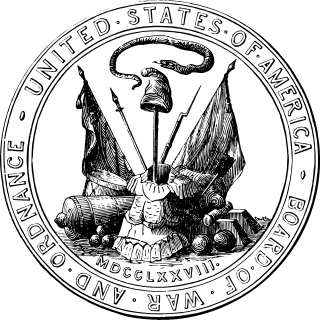 W
WThe Board of War, also known as the Board of War and Ordnance, was created by the Second Continental Congress as a special standing committee to oversee the American Continental Army's administration and to make recommendations regarding the army to Congress. On January 24, 1776, Congressional delegate Edward Rutledge, echoing General George Washington's own concerns, suggested that a war office similar to Great Britain's be established. Pressure from Washington and the large volume of military business led Congress to establish the Board of War and Ordnance on June 12, 1776. Five delegates of Congress, initially John Adams, Roger Sherman, Benjamin Harrison, James Wilson, and Edward Rutledge, assisted by a permanent secretary, Richard Peters, composed the Board of War. They assumed the prescribed responsibilities for compiling a master roster of all Continental Army officers; monitoring returns of all troops, arms, and equipment; maintaining correspondence files; and securing prisoners of war. The Board of War began functioning on June 21, 1776.
 W
WCarpenters' Hall is the official birthplace of the Commonwealth of Pennsylvania and a key meeting place in the early history of the United States. It is in Independence National Historical Park in Philadelphia, Pennsylvania.
 W
WThe Committee of Five of the Second Continental Congress was a group of five members who drafted and presented to the full Congress what would become America's Declaration of Independence of July 4, 1776. This Declaration committee operated from June 11, 1776, until July 5, 1776, the day on which the Declaration was published.
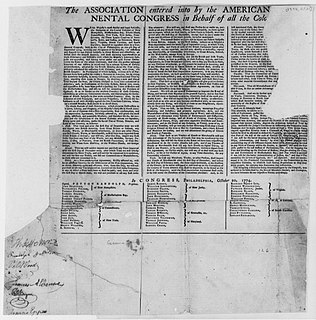 W
WThe Continental Association, often known simply as the "Association", was a system created by the First Continental Congress in 1774 for implementing a trade boycott with Great Britain. Congress hoped that, by imposing economic sanctions, they would pressure Britain into addressing the grievances of the colonies, in particular repealing the Intolerable Acts passed by Parliament. The Association aimed to alter Britain's policies toward the colonies without severing allegiance.
 W
WThe Conway Cabal was a group of senior Continental Army officers in late 1777 and early 1778 who aimed to have George Washington replaced as commander-in-chief of the Army during the American Revolutionary War. It was named after Brigadier General Thomas Conway, whose letters criticizing Washington were forwarded to the Second Continental Congress. When these suggestions were made public, supporters of Washington mobilized to assist him politically. Conway ended up resigning from the army, and General Horatio Gates, a leading candidate to replace Washington, issued an apology for his role in events.
 W
WCookes House, also known as Tom Paine's House, is a historic home located at York, Pennsylvania, York County, Pennsylvania. It was built in 1761, and is a two-story, Germanic and Provincial Georgian influenced stone dwelling. About 1800, it was converted to a double house. It is the third oldest building in York, after the Gen. Horatio Gates House and Golden Plough Tavern. It is believed to have been the home of Thomas Paine (1737–1809), while the Second Continental Congress convened in York, September 30, 1777 to June 27, 1778.
 W
WThe United States Declaration of Independence is the pronouncement adopted by the Second Continental Congress meeting in Philadelphia, Pennsylvania, on July 4, 1776. The Declaration explained why the Thirteen Colonies at war with the Kingdom of Great Britain regarded themselves as thirteen independent sovereign states, no longer under British rule. With the Declaration, these new states took a collective first step toward forming the United States of America. The declaration was signed by representatives from New Hampshire, Massachusetts Bay, Rhode Island, Connecticut, New York, New Jersey, Pennsylvania, Maryland, Delaware, Virginia, North Carolina, South Carolina, and Georgia.
 W
WThe Reverend Jacob Duché (1737–1798) was a Rector of Christ Church in Philadelphia, Pennsylvania, and the first chaplain to the Continental Congress.
 W
WGalloway's Plan of Union was a plan to politically unite Great Britain and its North American colonies. The plan was put forward by Loyalist Joseph Galloway in the First Continental Congress of 1774 but was rejected. Galloway was a Pennsylvania delegate who wanted to keep the Thirteen Colonies in the British Empire.
 W
WThe Gen. Horatio Gates House and Golden Plough Tavern are two connecting historic buildings located in downtown York, York County, Pennsylvania. The buildings were restored between July 1961 and June 1964, and operated as a museum by the York County History Center.
 W
WThe "Henry Fite House", located on West Baltimore Street, between South Sharp and North Liberty Streets, in Baltimore, Maryland, was the meeting site of the Second Continental Congress from December 20, 1776 until February 22, 1777. Built as an inn and tavern around 1770 in the Georgian architectural style in red brick with white wood trim by Henry Fite (1722–1789), the building became known as "Congress Hall" when it briefly served as the new nation's seat of government in 1776–77. Later, following the Revolutionary War, it became known locally as "Old Congress Hall". The structure was destroyed during the February 7–8, 1904 Great Baltimore Fire, which started nearby.
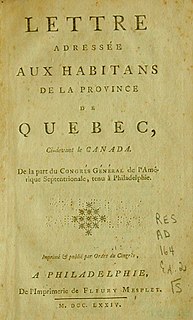 W
WThe Letters to the inhabitants of Canada were three letters written by the First and Second Continental Congresses in 1774, 1775, and 1776 to communicate directly with the population of the Province of Quebec, formerly the French province of Canada, which had no representative system at the time. Their purpose was to draw the large French-speaking population to the American revolutionary cause. This goal ultimately failed, and Quebec, along with the other northern provinces of British America, remained loyal to Britain. The only significant assistance that was gained was the recruitment of two regiments totalling not more than 1,000 men.
 W
WThe Continental Congress was initially a convention of delegates from several British American colonies at the height of the American Revolution era, who spoke and acted collectively for the people of the Thirteen colonies that ultimately became the United States of America. The term most specifically refers to the First Continental Congress of 1774 and the Second Continental Congress of 1775–1781. More broadly, it also refers to the Congress of the Confederation of 1781–1789, thus covering the entire period the Continental Congress served as the chief legislative and executive body of the U.S. government.
 W
WNassau Hall is the oldest building at Princeton University in Princeton, Mercer County, New Jersey, United States. In 1783 it served as the United States Capitol building for four months. At the time it was built in 1756, Nassau Hall was the largest building in colonial New Jersey and the largest academic building in the American colonies.
 W
WThe Olive Branch Petition was adopted by the Second Continental Congress on July 5, 1775, and signed on July 8 in a final attempt to avoid war between Great Britain and the Thirteen Colonies in America. The Congress had already authorized the invasion of Canada more than a week earlier, but the petition affirmed American loyalty to Great Britain and beseeched King George III to prevent further conflict. It was followed by the July 6 Declaration of the Causes and Necessity of Taking Up Arms, however, which made its success unlikely in London. In August 1775, the colonies were formally declared to be in rebellion by the Proclamation of Rebellion, and the petition was rejected by the British government; King George had refused to read it before declaring the colonists traitors.
 W
WPassport Act of 1782 was enacted by the Congress of the Confederation on February 11, 1782. The Act was recorded in the twenty-second volume of the Journals of the Continental Congress. The passport article was a letter from Thomas Smith of Virginia to George Clymer, Samuel Osgood, and James Madison regarding the nautical trade between tobacco colonies. The Act of Congress states safe passage for the Commonwealth of Virginia traders capitulants seeking to transport tobacco from Yorktown, Virginia to New York.
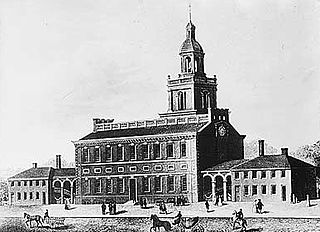 W
WThe Pennsylvania Mutiny of 1783 was an anti-government protest by nearly 400 soldiers of the Continental Army in June 1783. The mutiny, and the refusal of the Executive Council of Pennsylvania to stop it, ultimately resulted in Congress of the Confederation vacating Philadelphia and the creation of a federal district to serve as the national capital.
 W
WThe President of the Continental Congress, later known as the President of the Congress of Confederation, was the presiding officer of the Continental Congress, the convention of delegates that emerged as the first (transitional) national government of the United States during the American Revolution. The president was a member of Congress elected by the other delegates to serve as a neutral discussion moderator during meetings of Congress. Designed to be a largely ceremonial position without much influence, the office was unrelated to the later office of President of the United States. Upon the ratification of the Articles of Confederation in March 1781, the Continental Congress became the Congress of the Confederation. The membership of the Second Continental Congress carried over without interruption to the First Congress of the Confederation, as did the office of president.
 W
WCharles Thomson was an Irish-born Patriot leader in Philadelphia during the American Revolution, and the secretary of the Continental Congress (1774–1789) throughout its existence.
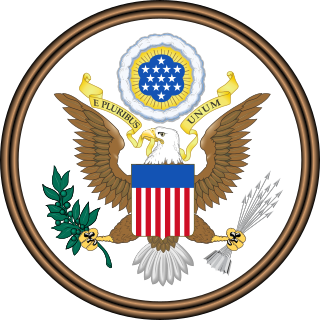 W
WTory Act of 1776 was penned as seven resolutions passed by the Second Continental Congress in Philadelphia, Pennsylvania on January 2, 1776. The legislative resolutions emphasized the American Patriots opposing sentiments towards the colonial political factions, better known as British America's Tories or Royalists.